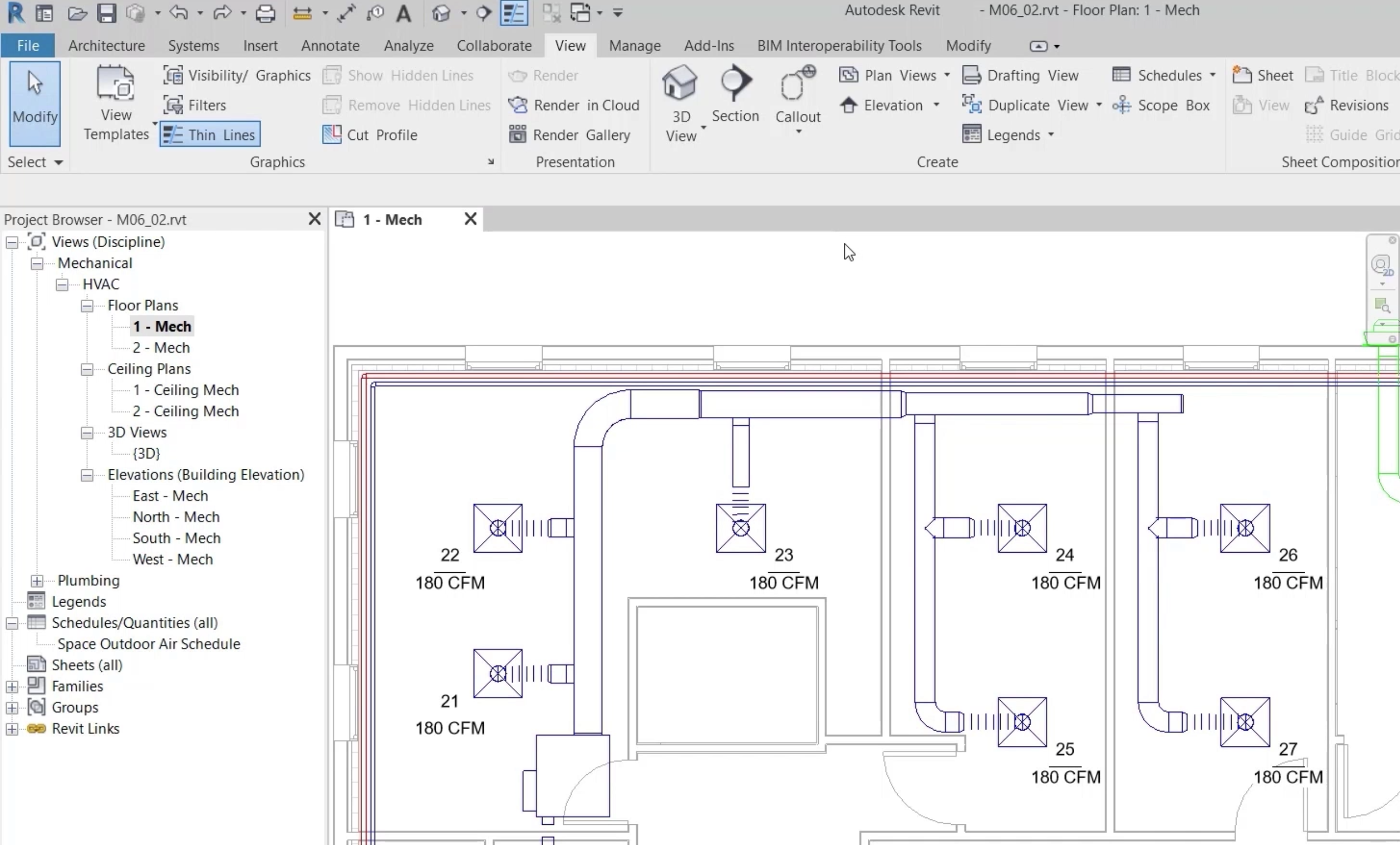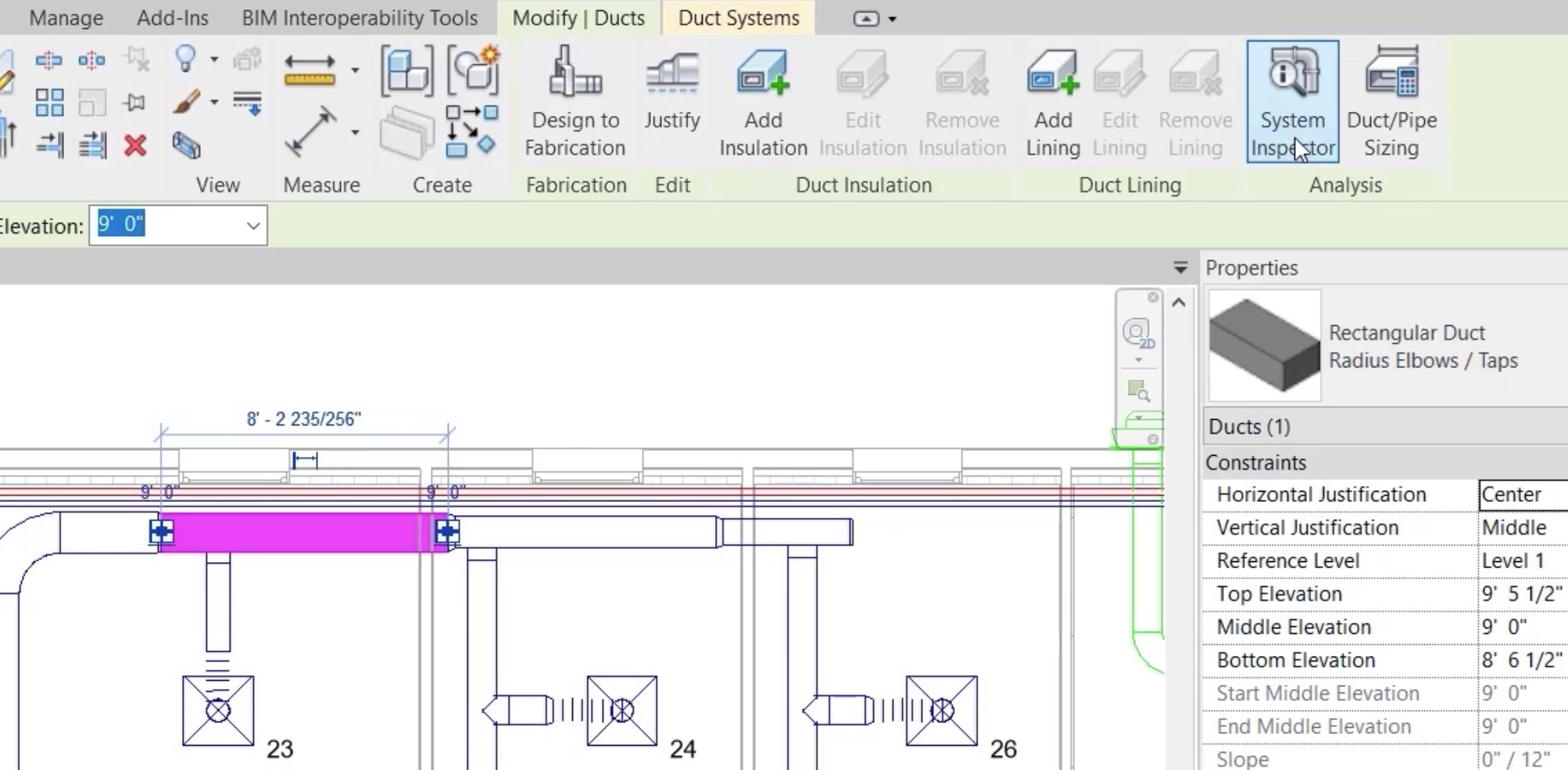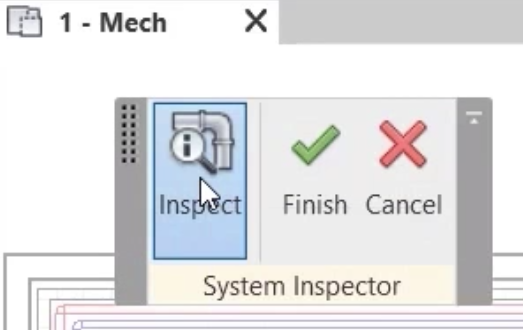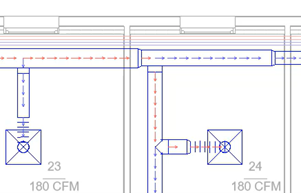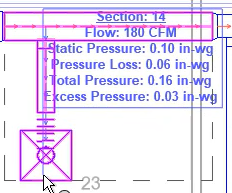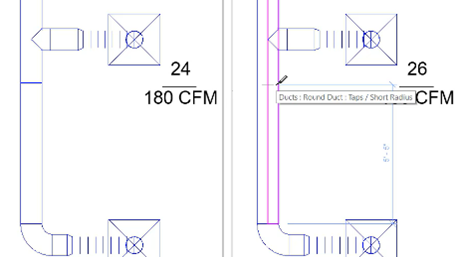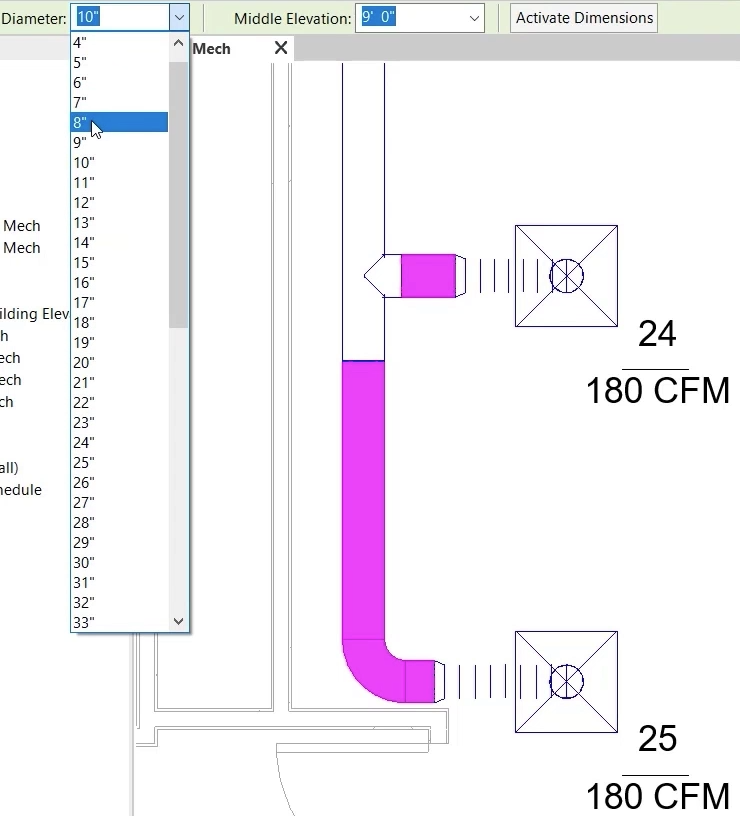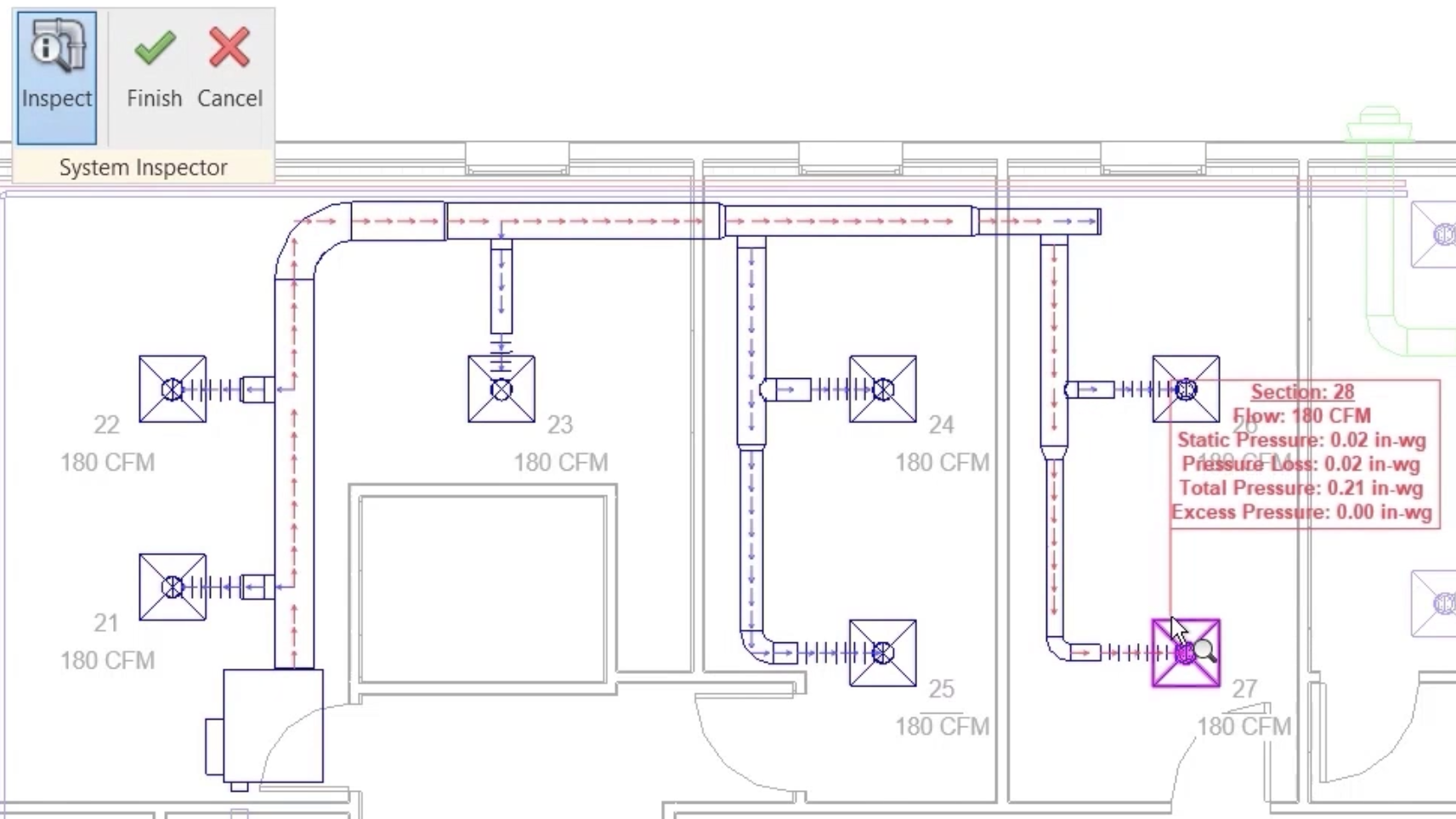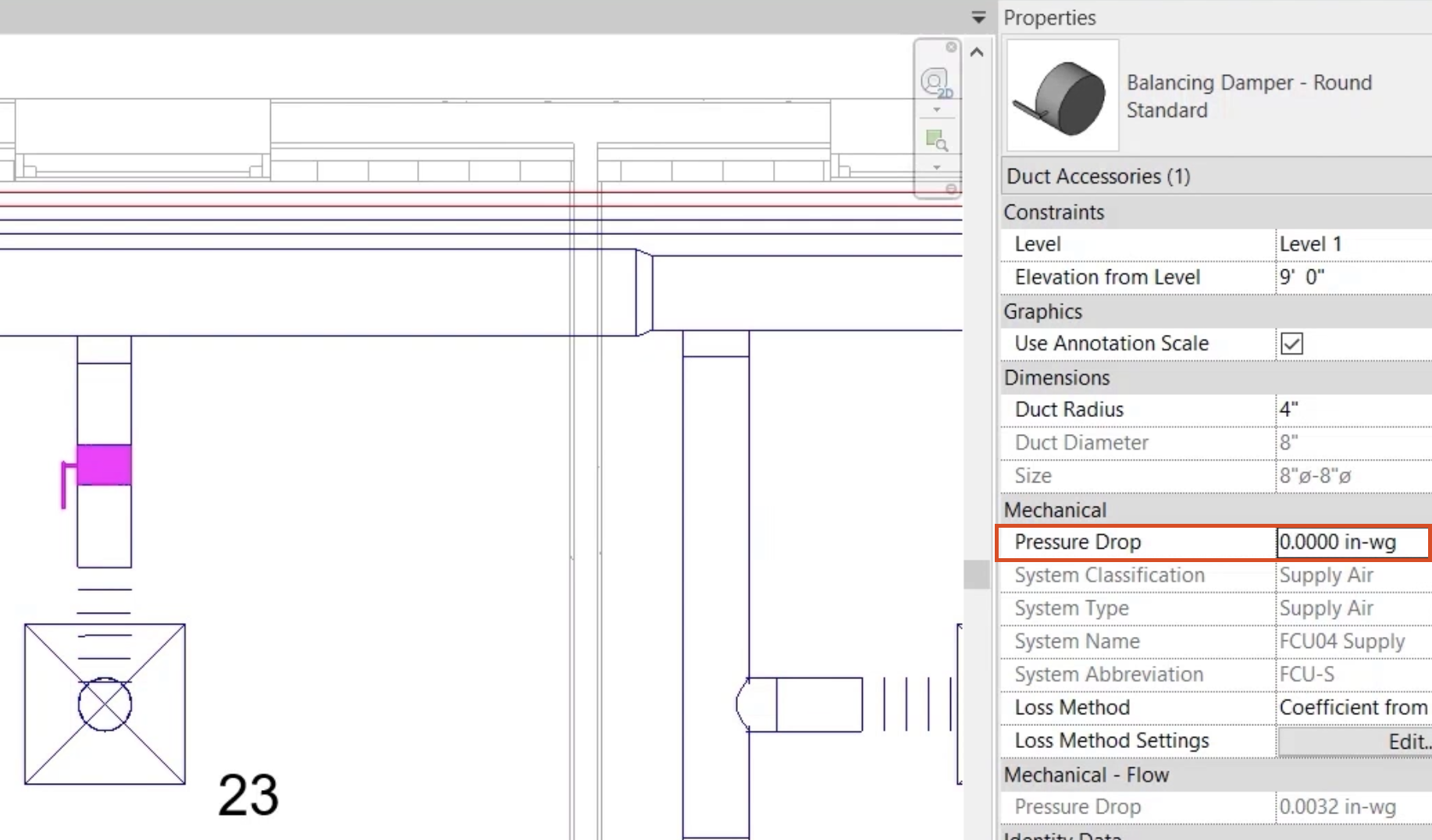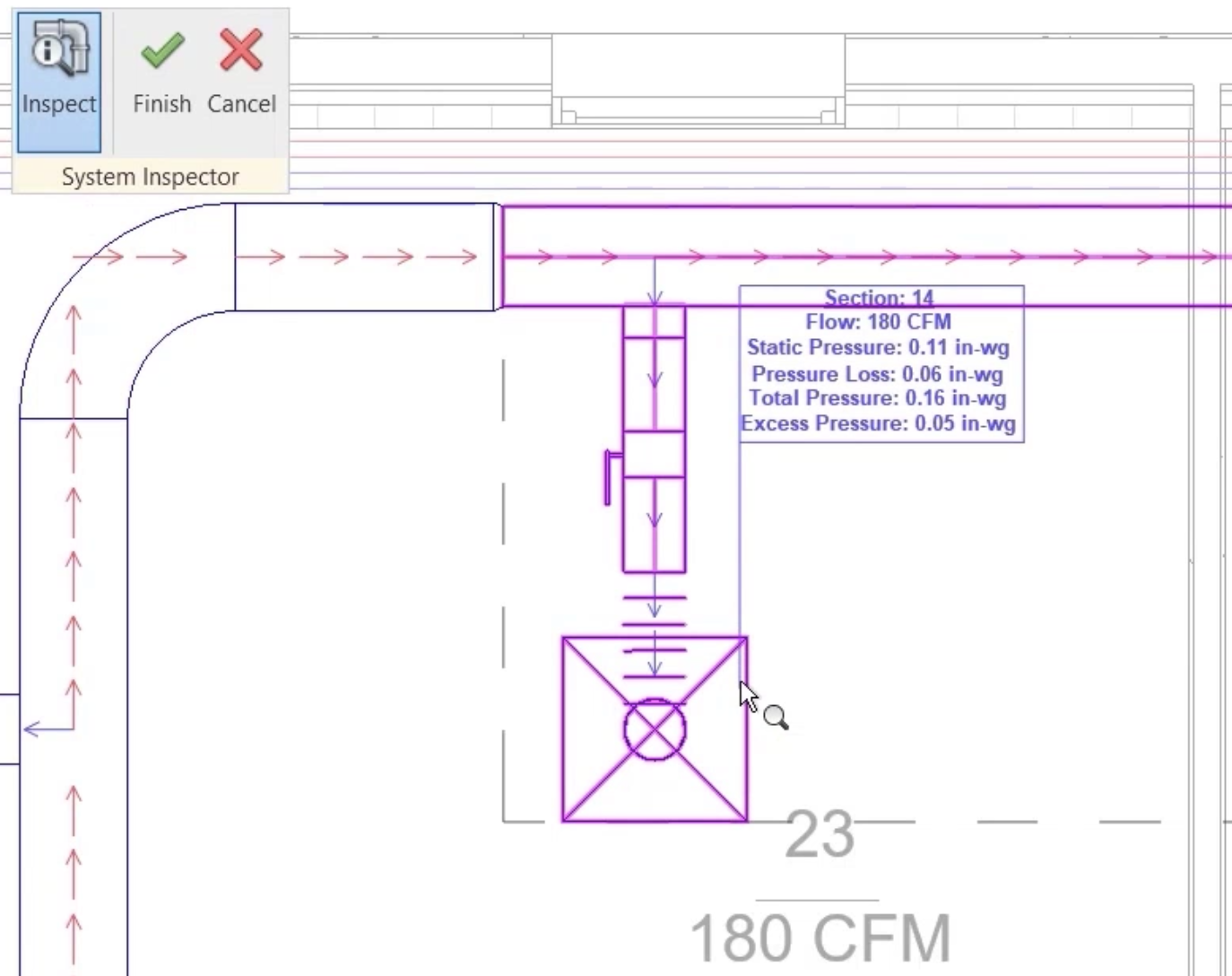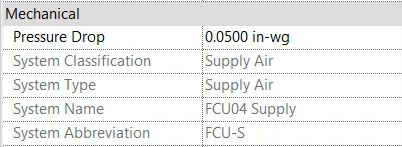Interrogate system information with the system inspector
Review the system inspector and how it is used for system information and to make design changes.
Tutorial resources
These downloadable resources will be used to complete this tutorial:
Step-by-step guide
Review the System Inspector and how it is used for system information and to make design changes.
- Open the project M06_02.rvt.
- Ensure that the current view is HVAC > Floor Plans > 1 – Mech.
- In the system FCU04 Supply, select a section of duct.
- From the Duct Systems contextual ribbon tab, click System Inspector.
- From the System Inspector panel, click Inspect.
The red arrows to air terminal 24 indicate the critical path for this system.
- Continue to move your pointer across the system and observe the range of information available from the System Inspector.
- Place your pointer over air terminal 24 and note the Excess Pressure value of zero.
- Place your pointer over other air terminals and note the higher values.
This information can be used at a later stage to apply values to dampers in the system.
- Click Finish to close the System Inspector.
- From the Modify panel of the ribbon, click Split Element.
- In the main run of duct, just after air terminals 24 and 26, create a split.
- Change the duct size to air terminals 24 and 25 to 8".
- Change the duct size to air terminals 26 and 27 to 6", including the flex duct.
- Use the System Inspector again to check the critical path and the Excess Pressure value at air terminal 27.
- Close the System Inspector.
- Zoom into the area around air terminal 23.
- From the ribbon, Systems tab, HVAC panel, click Duct Accessory.
- From the Type Selector, choose the round damper.
- In the ductwork at air terminal 23, click to place the damper.
- Select the damper.
- In Properties, change the Pressure Drop to 0.
- Use the System Inspector to check the Excess Pressure value at air terminal 23. The value should be 0.05.
- Close the System Inspector.
- Select the damper.
- In Properties, change the Pressure Drop value to 0.05 to match the Excess Pressure value at the air terminal.
